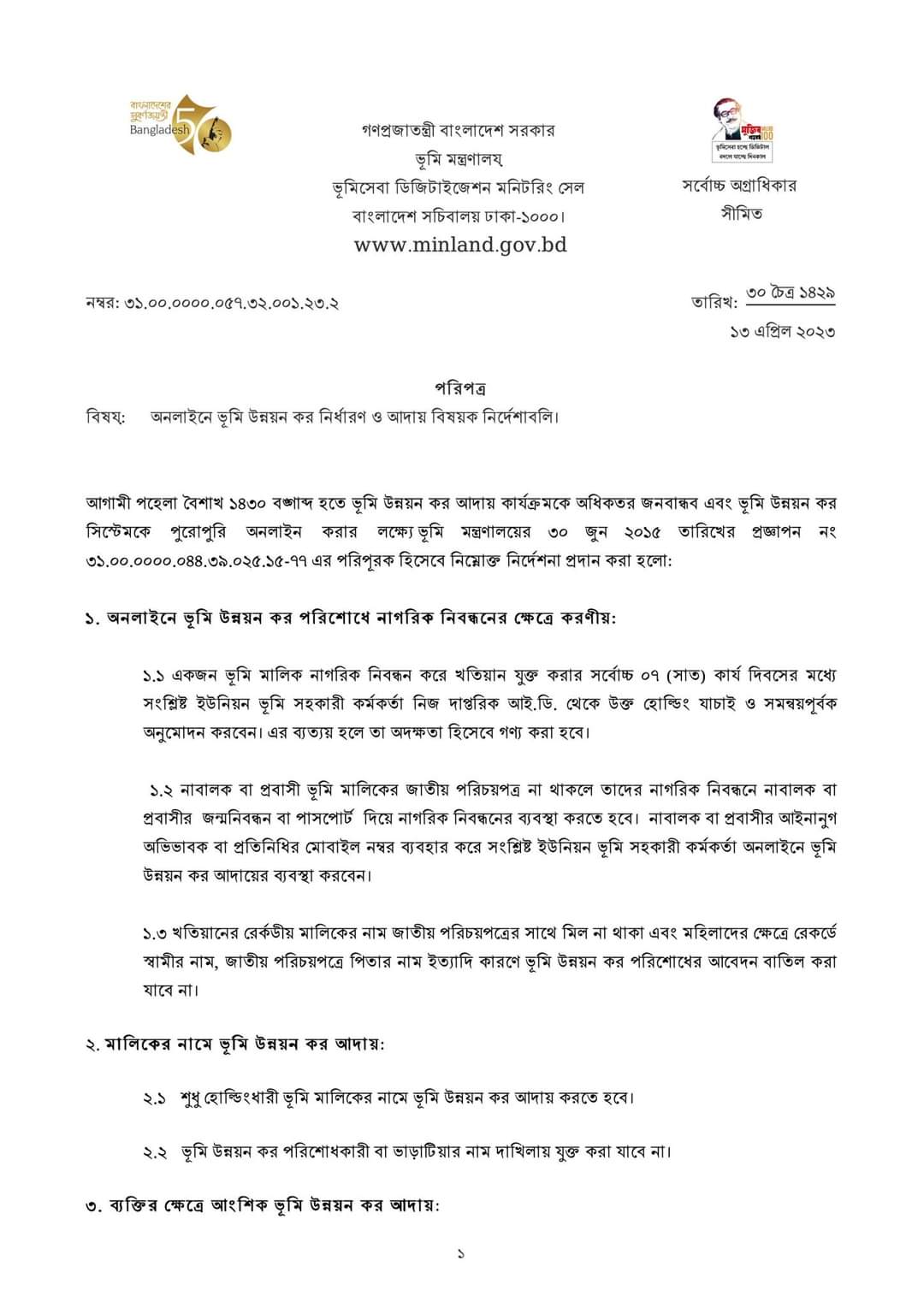জমিদারগণ ও জমিদারি প্রশাসন ব্যবস্থা যেমন ছিল
বিখ্যাত জমিদারগণ ও জমিদারি প্রশাসনইসাফপুর জমিদারি
যশোর জেলাটি প্রধানত তিন চারটি জমিদারিতে বিভক্ত ছিল। পূর্বে অবস্থিত ভৈরব ও পশার এর মধ্যবর্তী অঞ্চলের পুরোটাই এবং পশ্চিমে ইছামতি পর্যন্ত বিস্তৃর্ণ প্রায় সমগ্র অঞ্চল নিয়ে ছিল ইসাফপুর জমিদারি। এর জমিদার ছিলেন রাজা শ্রীকান্ত রায়। যে রাজপথটি কোলকাতা হয়ে যশোরে এসে ঢাকা পর্যন্ত চলে গিয়েছে তার কাছাকাছি পর্যন্ত বিস্তৃত ছিল তার জমিদারির উত্তরের সীমানা। এই স্টেটকে বলা হতো ইসাফপুর জমিদারি।

সৈয়দপুর জমিদারি
ইসাফপুর জমিদারিটি ছিল আসল জমিদারির বারো আনা। আর বাকি চার আনা বিচ্ছিন্ন করে ফেলা হয়। একজন মুসলিম জমিদারের নিকট তা হস্তান্তর করা হয়। এই বিচ্ছিন্ন অংশ মূলত সৈয়দপুর ও সাহাশ পরগানা নিয়ে গঠিত। এই স্টেটের নাম পরবর্তীতে সৈয়দপুর নামে নামকরণ করা হয়।মোহাম্মাদশাহী স্টেট
যে সীমানাটির কথা এতক্ষণ বলা হলো সেই সৈয়দপুর জমিদারির ঠিক উত্তরে অবস্থিত ছিল মোহাম্মদশাহী স্টেট। এই স্টেটটি নলডাংগা পরিবারের অধীনে ছিল। মানচিত্রে এর পরিসীমা কিছুটা কাকতালীয়ভাবে সেইসব অঞ্চলের সাথে দেখানো হয়েছে যা এখনও মোহাম্মদদশাহী পরগনা নামে পরিচিত।ভূষণা জমিদারি
এরপর সবচেয়ে বিখ্যাত জমিদারি হলো ‘ভূষণা জমিদারি’, যা নাটোরের রাজার রাজত্বের একটি অংশ ছিল। ভূষণা জমিদারি তখনকার দিনে কেবল বর্তমান ফরিদপুর জেলাকেই অন্তর্ভূক্ত করেনি বরং বর্তমান যশোরের উত্তর-পূর্বের নলদি পরগনা, সাতর ও মুকিমপুর পরগনাকে অন্তর্ভূক্ত করেছিলো। যদিও ভূষণা ছিল নাটোর রাজার অধিকৃত অঞ্চলের একটি অংশ, তবুও এটিকে একটি স্বতন্ত্র জমিদারি হিসেবে সবসময় গণ্য করা হতো।৩৯অন্যান্য কতিপয় ক্ষুদ্র জমিদারি
এসব বড় ও বিখ্যাত জমিদারিগুলো ছাড়াও এ জেলায় কিছু ক্ষুদ্র জমিদারি ছিল। হোগলা ও বেলফুলিয়া পরগনা এসবের মধ্যে কিছুটা বড় জমিদারি হিসেবে স্বীকৃতি পেয়েছিল। জমিদার কৃষ্ণসিংহ রায় এখানকার জমিদার ছিলেন, যার উত্তরাধিকারীরা পরবর্তী সময়ে জমিদারি ভাগাভাগি নিয়ে দ্বন্দ্ব কলহে জড়িয়ে পরার ঘটনা ব্যতিরেকে এই পরিবার সম্পর্কে আর কিছু জানা যায়নি।জমিদারি কতৃত্বের ধরণ
সেলিমবাদ ও অন্যান্য ক্ষুদ্র জমিদারির সাথে আরেকটি জমিদারির নাম উল্লেখ করতে হয়। এ জমিদারিটি হল সুলতানপুর জমিদারি। কাশিনাথ দত্ত ছিলেন ঐ জমিদারির জমিদার। সুলতানপুরের তৎকালীন জমিদার দেনাগ্রস্ত হয়ে পড়লে কাশিনাথ দত্ত নামক এক ব্যক্তি সমস্ত দেনা পরিশোধ করেন এবং ১৭৭৪ সালে রাজস্ব কমিটির প্রস্তাব মতে ঐ অঞ্চলের জমিদারি লাভ করেন। এর ফলশ্রুতিতে তাকে সেই স্টেটের তের আনা সম্পত্তি অধিকার দেয়া হয়েছিল। চাঁচড়ার রাজ পরিবারের ইতিহাস থেকে এরকম বহু দৃষ্টান্ত লিপিবদ্ধ করা যায় যেখানে শাসক শ্রেণী খাজনা প্রদানে ব্যর্থ জমিদারের নিকট হতে সম্পূর্ণ আগন্তকের নিকট শুধুমাত্র দেনা পরিশোধের শর্তে স্টেটের মালিকানা পরিবর্তন করেছেন। কিন্তু পরবর্তীতে বৃটিশ সরকার এ বিষয়ে একটি সুনির্দিষ্ট নীতিমালা গ্রহণ করেছিলেন।বৃহৎ ও ক্ষুদ্র জমিদারির মধ্যে পার্থক্য
যে সকল জমিদারির কথা উলেলখিত হলো তা এই জেলার প্রায় সমস্ত অঞ্চল নিয়ে বিস্তৃত থাকলেও আরো অনেক ক্ষুদ্র জমিদারি এই দেশের বিভিন্ন প্রান্তে ছড়িয়ে ছিটিয়ে ছিল। চিরস্থায়ী বন্দোবস্তের সময় এদেশে মোট জমিদারির সংখ্যা ছিল ১০০টিরও বেশি। কিন্তু বড় জমিদারির বৈশিষ্ট্য ও মালিকানাগত অবস্থান ছিল ছোটগুলোর থেকে আলাদা। এ কথাটি এখানে বলা যায় যে ক্ষুদ্র জমিদারিগুলো ছিল বড় কোন স্বতন্ত্র স্টেটের নিকট হতে ক্রয়কৃত বা দানকৃত আলাদা অংশ। বৃহৎ জমিদারগণের এই দেশের প্রশাসন ব্যবস্থায় একটা অংশগ্রহণ ছিল যা ক্ষুদ্র ক্ষুদ্র জমিদারদের বেলায় কার্যকর ছিল না। জমিদারগণ রাজস্ব আয়ের জন্য চুক্তিভিত্তিকভাবে নিয়োগপ্রাপ্ত ছিলেন
কাশিনাথ রায়ের জমিদারি অর্জনের ঘটনাটি একটি বিতর্কের জন্ম দেয়। এ বিতর্কটি হল যে, জমিদাররা কি স্টেটের আসল মালিক হিসেবে সরকারকে রাজস্ব প্রদান করতেন নাকি তারা ছিলেন কেবল রাজস্ব আয়ের জন্য চুক্তি ভিত্তিক নিয়োগপ্রাপ্ত ব্যক্তিবর্গ। চাঁচড়া রাজপরিবারের একটি ঘটনা জমিদারদের অবস্থান সম্পর্কে দ্বিতীয় ধারণার সত্যতাকে সমর্থন করে। চাঁচড়া রাজপরিবারের বংশধরদের মধ্যে একজন ছিলেন মনোহর রায়, যিনি শুধুমাত্র নবাবের সথে তার স্টেটের রাজস্ব সংগ্রহের বিষয়ে ব্যস্ত ছিলেন না বরং তার প্রতিবেশী ছোট ছোট স্টেটেরও রাজস্ব সংগ্রহ করে দিতেন যাদের সাথে তার পূর্ববর্তী কোন সম্পর্ক ছিল না।জমিদারদের প্রশাসনিক ক্ষমতা ও দায়িত্বজ্ঞানহীনতা
জমিদারগণ চুক্তিভিত্তিকভাবে শুধু ভূমি রাজস্ব নয় বরং অন্যান্য রাজস্ব সংগ্রহ করতেন। এ বিষয়ে প্রশাসন তাদের চুক্তিভিত্তিক নিয়োগ প্রদান করতেন। তারা আবগারী রাজস্ব হিসেবে নির্দিষ্ট পরিমাণে রাজস্ব প্রদান করতেন এবং তারা তাদের কর্তৃত্বাধীন এলাকায় নিজেদের খুশিমত আবগারী জমা করতেন। তারা আভ্যন্তরীণ ব্যবসার মাধ্যমে সরকারকে একটি নির্দিষ্ট পরিমাণে শুল্ক দিতেন, অন্যদিকে ব্যবসায়ীদের নিকট হতে তারা তাদের ইচ্ছেমত শুল্ক আদায় করতেন। পুলিশের দায়িত্বভার তাদের উপর ন্যাস্ত ছিল এবং পুলিশ ব্যবস্থাকে তারা প্রতিপালন করতেন। তাদের অধিক্ষেত্রে কেউ যদি ডাকাতির কবলে পড়ত, তাহলে জমিদারগণ তার সকল ক্ষতিপূরণ দিতে বাধ্য থাকতেন। কিন্তু এই চুক্তির ধারাটি বাস্তবায়নে বৃটিশ সরকার এমনকি তৎকালীন মুসলিম শাসকগণ শক্তভাবে অবস্থান নিয়ে জমিদারদেরকে বাধ্য করতে পারেননি। জমিদারগণ ও তাদের অধীনস্থরা ছোটখাট দেওয়ানী ও ফৌজদারী বিরোধ মিমাংসায় বিচারকের দায়িত্বও পালন করতেন।
Famous zamindars and zamindari administration
Famous zamindars and zamindari administration isafpur zamindari
Jessore district was mainly divided into three or four zamindari. The Isafpur zamindari consisted of the whole of the area between Bhairab and Pashar in the east and almost the entire area extending to Ichhamati in the west. Its zamindar was Raja Srikant Roy. The northern boundary of his zamindari stretched as far as the highway which ran from Kolkata to Jessore and then to Dhaka. This state was called Isafpur zamindari.

Syedpur zamindari
The Isafpur zamindari was twelve annas of the original zamindari. And the remaining four annas are separated. It was handed over to a Muslim zamindar. This isolated part consists mainly of Syedpur and Sahash Parganas. This state was later renamed as Syedpur. Mohammadshahi State
The Mohammadshahi State was located just north of the Syedpur zamindari, the boundary mentioned so far. This state was under the Naldanga family. Its range is shown on the map somewhat coincidentally with the area which is still known as Mohammadshahi Pargana.
The next most famous zamindari was the Bhusana zamindari, which was a part of the reign of the king of Natore. The Bhusana zamindari at that time included not only the present Faridpur district but also the present Naldi Pargana, Satar and Mukimpur Parganas to the north-east of Jessore. Although Bhusana was a part of the territory occupied by the king of Natore, it was always regarded as a separate zamindari.
Apart from these big and famous zamindari, there were some small zamindari in this district. Hogla and Belfulia Parganas were recognized as somewhat larger zamindari. Zamindar Krishnasingh Roy was the zamindar here, the heirs of which later became embroiled in conflicts over the division of zamindari.
The name of another zamindari has to be mentioned along with Selimbad and other small zamindari. This zamindari is Sultanpur zamindari. Kashinath Dutt was the zamindar of that zamindari. When the then zamindar of Sultanpur became indebted, a man named Kashinath Dutta paid all the debts and in 184 he got the zamindari of the area as per the proposal of the revenue committee. As a result, he was given thirteen acres of property in that state. Many such instances can be recorded from the history of the royal family of Chanchra where the ruling class changed the ownership of the state from the landlord who failed to pay the rent to the complete visitor only on condition of payment of debts. But later the British government adopted a specific policy in this regard. The difference between large and small zamindari
Although the zamindari mentioned are spread over almost all the regions of this district, many more small zamindari were scattered in different parts of this country. At the time of the permanent settlement, the total number of zamindari in this country was more than 100. But the features and ownership of the large estates were different from those of the smaller ones. It can be said here that small zamindari were separate parts purchased or donated from a large individual state. Large zamindars had a participation in the administrative system of this country which was not effective in the case of small zamindars. The zamindars were employed on contract basis for revenue
The acquisition of zamindari by Kashinath Roy gave rise to a controversy. The controversy is whether the zamindars, as the real owners of the state, paid revenue to the government or whether they were merely contract persons appointed for revenue generation. An incident in the Chanchra royal family supports the veracity of the second idea about the position of zamindars. One of the descendants of the Chanchara dynasty was Manohar Roy, who along with the Nawab was not only busy collecting revenue for his state but also for collecting revenue from his neighboring small states with which he had no previous connection. Administrative power and irresponsibility of zamindars
The zamindars used to collect not only land revenue but also other revenue on contract basis. In this regard, the administration used to give them contractual appointments. They paid a certain amount of revenue as excise revenue and they collected their own excise in the area under their jurisdiction. They used to pay a certain amount of duty to the government through internal business, on the other hand they used to collect whatever they wanted from the traders. The responsibility of the police was entrusted to them and they were in charge of the police system. If someone in their jurisdiction fell prey to robbery, the zamindars would be obliged to pay all his compensation. But the British government and even the then Muslim rulers could not force the zamindars to take a firm stand on the implementation of this treaty. The zamindars and their subordinates also acted as judges in resolving minor civil and criminal disputes.



